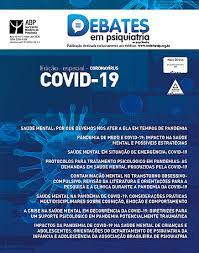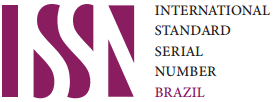Mental contamination in obsessive-compulsive disorder: literature review and guidelines for research and clinical practice during the Covid-19 pandemic
DOI:
https://doi.org/10.25118/2236-918X-10-2-5Keywords:
Obsessive-compulsive disorder, mental contaminati on, COVID-19Abstract
Is it possible to become contaminated through thought? Not objectively, but subjectively yes. The construct referred to as “mental contamination” is still poorly investigated and rarely mentioned in Portuguese-language scientific literature. Therefore, the aim of this article was to review studies that correlated mental contamination to obsessive-compulsive disorder (OCD) over the past 5 years. The search was performed on the PubMed, MEDLINE and PsycINFO databases; after applying the inclusion criteria, six studies were fully reviewed. Based on the analysis of samples, instruments adopted, results found and limitations reported by the authors of each study, we conclude that: 1) few studies have examined both clinical and non-clinical samples; 2) the Vancouver Obsessional Compulsive Inventory-Mental Contamination was the instrument most commonly used to measure mental contamination; 3) mental contamination is related to other phenomena that are also present in OCD (e.g.,disgust propensity); and 4) the studies commonly have sample limitati ons. Towards the end of the text, we present the necessary steps to encourage Brazilian scienti fi cresearch on mental contaminati on and also suggest how mental health professionals can guide pati ents with OCD during the pandemic, to reduce suscepti bility to mental contaminati on.
Downloads
Metrics
References
Rachman S, Radomsky AS, Elliott CM, Zysk E. Mental contamination: the perpetrator effect. J Behav Ther Exp Psychiatry. 2012;43:587-93. https://doi.org/10.1016/j.jbtep.2011.08.002
Coughtrey AE, Shafran R, Lee M, Rachman SJ. It's the feeling inside my head: a qualitative analysis of mental contamination in obsessive-compulsive disorder. Behav Cogn Psychother. 2012;40:163-73. https://doi.org/10.1017/S1352465811000658
Radomsky AS, Coughtrey A, Shafran R, Rachman S. Abnormal and normal mental contamination. J Obsessive Compuls Relat Disord. 2018;17:46-51. https://doi.org/10.1016/j.jocrd.2017.08.011
Herba JK, Rachman S. Vulnerability to mental contamination. Behav Res Ther. 2007;45:2804-12. https://doi.org/10.1016/j.brat.2007.07.010
Skapinakis P, Politis S, Karampas A, Petrikis P, Mavreas V. Prevalence, comorbidity, quality of life and use of services of obsessive-compulsive disorder and subthreshold obsessive-compulsive symptoms in the general adult population of Greece. Int J Psychiatry Clin Pract. 2019;23:215-24. https://doi.org/10.1080/13651501.2019.1588327
Lilienfeld SO, Pydych AL, Lynn SJ, Latzman RD, Waldman ID. 50 differences that make a difference: a compendium of frequently confused term pairs in psychology. Front Educ. 2017;2:37. https://doi.org/10.3389/feduc.2017.00037
Coughtrey AE, Shafran R, Knibbs D, Rachman SJ. Mental contamination in obsessive-compulsive disorder. J Obsessive Compuls Relat Disord. 2012;1:244-50. https://doi.org/10.1016/j.jocrd.2012.07.006
Jacoby RJ, Blakey SM, Reuman L, Abramowitz JS. Mental contamination obsessions: an examination across the obsessive-compulsive symptom dimensions. J Obsessive Compuls Relat Disord. 2018;17:9-15. https://doi.org/10.1016/j.jocrd.2017.08.005
Rachman S. Fear of contamination. Behav Res Ther. 2004;42:1227-55. https://doi.org/10.1016/j.brat.2003.10.009
Blakey SM, Jacoby RJ. The polluted mind: understanding mental contamination as a transdiagnostic phenomenon. J Obsessive Compuls Relat Disord. 2018;17:1-2. https://doi.org/10.1016/j.jocrd.2017.08.008
Coughtrey A, Shafran R, Bennett S, Kothari R, Wade T. Mental contamination: relationship with psychopathology and transdiagnostic processes. J Obsessive Compuls Relat Disord. 2018;17:39-45. https://doi.org/10.1016/j.jocrd.2017.08.009
Badour CL, Feldner MT, Babson KA, Blumenthal H, Dutton CE. Disgust, mental contamination, and posttraumatic stress: unique relations following sexual versus non-sexual assault. J Anxiety Disord 2013;27:155-62. https://doi.org/10.1016/j.janxdis.2012.11.002
Brake CA, Jones AC, Wakefield JR, Badour CL. Mental contamination and trauma: understanding posttraumatic stress, risky behaviors, and helpseeking attitudes. J Obsessive Compuls Relat Disord. 2018;17:31-8. https://doi.org/10.1016/j.jocrd.2017.08.010
Fairbrother N, Rachman S. Feelings of mental pollution subsequent to sexual assault. Behav Res Ther. 2004;42:173-89. https://doi.org/10.1016/S0005-7967(03)00108-6
Coughtrey AE, Shafran R, Lee M, Rachman S. The treatment of mental contamination: a case series. Cogn Behav Pract. 2013;20:221-31. https://doi.org/10.1016/j.cbpra.2012.07.002
Melli G, Bulli F, Carraresi C, Taranti no F, Gelli S, Poli A. The diff erenti al relati onship between mental contaminati on and the core dimensions of contact contaminati on fear. J Anxiety Disord. 2017;45:9-16. https://doi.org/10.1016/j.janxdis.2016.11.005
Zysk E, Shafran R, Williams T. The origins of mental contaminati on. J Obsessive Compuls Relat Disord. 2018;17:3-8. https://doi.org/10.1016/j.jocrd.2017.08.007
Poli A, Melli G, Radomsky AS. Diff erent disgust domains specifi cally relate to mental and contact contaminati on fear in obsessive-compulsive disorder: Evidence from a path analyti c model in an Italian clinical sample. Behav Ther. 2019;50:380-94. https://doi.org/10.1016/j.beth.2018.07.006
Mathes BM, McDermott KA, Okey SA, Vazquez A, Harvey AM, Cougle JR. Mental contaminati on in obsessive-compulsive disorder: associati ons with contaminati on symptoms and treatment response. Behav Ther. 2019;50:15-24. https://doi.org/10.1016/j.beth.2018.03.005
Shafran R, Zysk E, Williams T. The origins of mental contaminati on. J Obsessive Compuls Relat Disord. 2018;17:38. https://doi.org/10.1016/j.jocrd.2017.08.007
Coughtrey AE, Shafran R, Rachman SJ. Imagery in mental contaminati on. Behav Cogn Psychother. 2015;43:257-69. https://doi.org/10.1017/S1352465813000957
Rachman S, Coughtrey A, Shafran R, Radomsky A. Oxford guide to the treatment of mental contaminati on. Oxford: Oxford University; 2014. https://doi.org/10.1093/med:psych/9780198727248.001.0001
Borsa JC, Damásio BF, Bandeira DR. Adaptação e validação de instrumentos psicológicos entre culturas: algumas considerações. Paidéia (Ribeirão Preto). 2012;22:423-32. https://doi.org/10.1590/S0103-863X2012000300014
Henrich J, Heine SJ, Norenzayan A. The weirdest people in the world? Behav Brain Sci. 2010;33:61-83. https://doi.org/10.1017/S0140525X0999152X
Klein JP, Moritz S. On the relevance of mental imagery beyond stress-related psychiatric disorders. Front Psychiatry. 2014;5:77. https://doi.org/10.3389/fpsyt.2014.00077
Krishna A, Cian L, Sokolova T. The power of sensory marketi ng in adverti sing. Curr Opin Psychol. 2016;10:142-7. https://doi.org/10.1016/j.copsyc.2016.01.007
Van Bavel JJ, Baicker K, Boggio PS, Capraro V, Cichocka A, Cikara M, et al. Using social and behavioural science to support COVID-19 pandemic response. Nat Hum Behav. 2020;4:460-71. https://doi.org/10.1038/s41562-020-0884-z
Petersen M. The unpleasant truth is the best protecti on against coronavirus [Internet]. 2020 Mar 9 [cited 2020 May 20]. http://www.pure.au.dk/portal/files/181464339/The_unpleasant_truth_is_the_best_protection_against_coronavirus_Michael_Bang_Petersen.pdf
Finset A, Bosworth H, Butow P, Gulbrandsen P, Hulsman RL, Pieterse AH, et al. Eff ecti ve health communicati on-a key factor in fi ghti ng the COVID-19 pandemic. Pati ent Educ Couns. 2020;103:873-6. https://doi.org/10.1016/j.pec.2020.03.027
Sorokowski P, Groyecka A, Kowal M, Sorokowska A, Białek M, Lebuda I, et al. Informati on about pandemic increases negati ve atti tudes toward foreign groups: a case of COVID-19 outbreak [Internet]. 2020 Mar https://doi.org/10.31234/osf.io/j23vt [cited 2020 May 20]. https://psyarxiv.com/j23vt/
Navarrete CD, Fessler DM. Disease avoidance and ethnocentrism: the eff ects of disease vulnerability and disgust sensiti vity on intergroup atti tudes. Evol Hum Behav. 2006;27:270-82. https://doi.org/10.1016/j.evolhumbehav.2005.12.001
Curti s V, de Barra M, Aunger R. Disgust as an adapti ve system for disease avoidance behaviour. Philos Trans R Soc Lond B Biol Sci. 2011;366:389-401. https://doi.org/10.1098/rstb.2010.0117
Silva AG, Miranda DM, Diaz AP, Teles AL, Malloy-Diniz LF, Palha AP. Mental health: why it sti ll matt ers in the midst of a pandemic. Braz J Psychiatry. 2020 Apr 3;S1516-44462020005008202. doi: 10.1590/1516-4446-2020-0009. Online ahead of print. https://doi.org/10.1590/1516-4446-2020-0009
Duan L, Zhu G. Psychological interventi ons for people aff ected by the COVID-19 epidemic. Lancet Psychiatry 2020;7:300-2. https://doi.org/10.1016/S2215-0366(20)30073-0
Correa H, Malloy-Diniz LF, da Silva AG. Why psychiatric treatment must not be neglected during the COVID-19 pandemic. Braz J Psychiatry. 2020 Apr 30;S1516-44462020005011204. https://doi.org/10.1590/1516-4446-2020-0995
Yao H, Chen JH, Xu YF. Pati ents with mental health disorders in the COVID-19 epidemic. Lancet Psychiatry. 2020;7:e21. https://doi.org/10.1016/S2215-0366(20)30090-0
Downloads
Published
How to Cite
Conference Proceedings Volume
Section
License

This work is licensed under a Creative Commons Attribution-NonCommercial 4.0 International License.
Debates em Psiquiatria allows the author (s) to keep their copyrights unrestricted. Allows the author (s) to retain their publication rights without restriction. Authors should ensure that the article is an original work without fabrication, fraud or plagiarism; does not infringe any copyright or right of ownership of any third party. Authors should also ensure that each one complies with the authorship requirements as recommended by the ICMJE and understand that if the article or part of it is flawed or fraudulent, each author shares responsibility.
Attribution-NonCommercial 4.0 International (CC BY-NC 4.0) - Debates em Psiquiatria is governed by the licencse CC-By-NC
You are free to:
- Share — copy and redistribute the material in any medium or format
- Adapt — remix, transform, and build upon the material
The licensor cannot revoke these freedoms as long as you follow the license terms. Under the following terms:
- Attribution — You must give appropriate credit, provide a link to the license, and indicate if changes were made. You may do so in any reasonable manner, but not in any way that suggests the licensor endorses you or your use.
- NonCommercial — You may not use the material for commercial purposes.
No additional restrictions — You may not apply legal terms or technological measures that legally restrict others from doing anything the license permits.






























